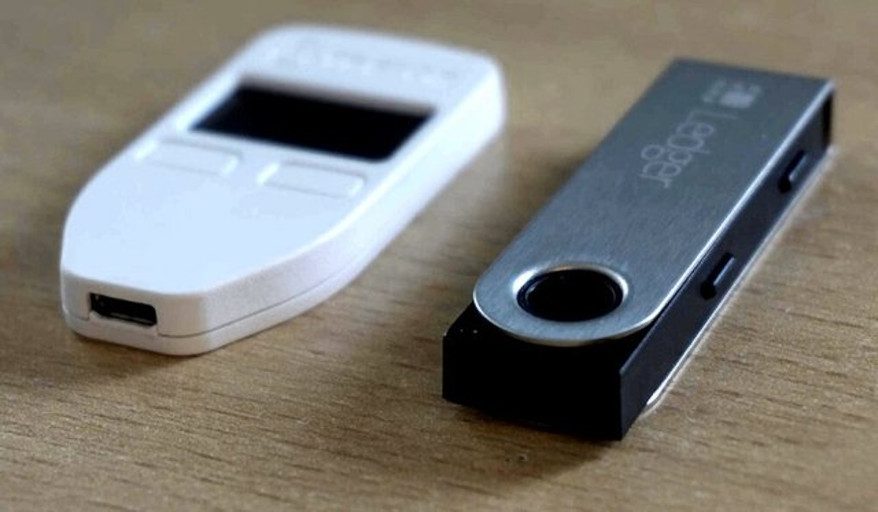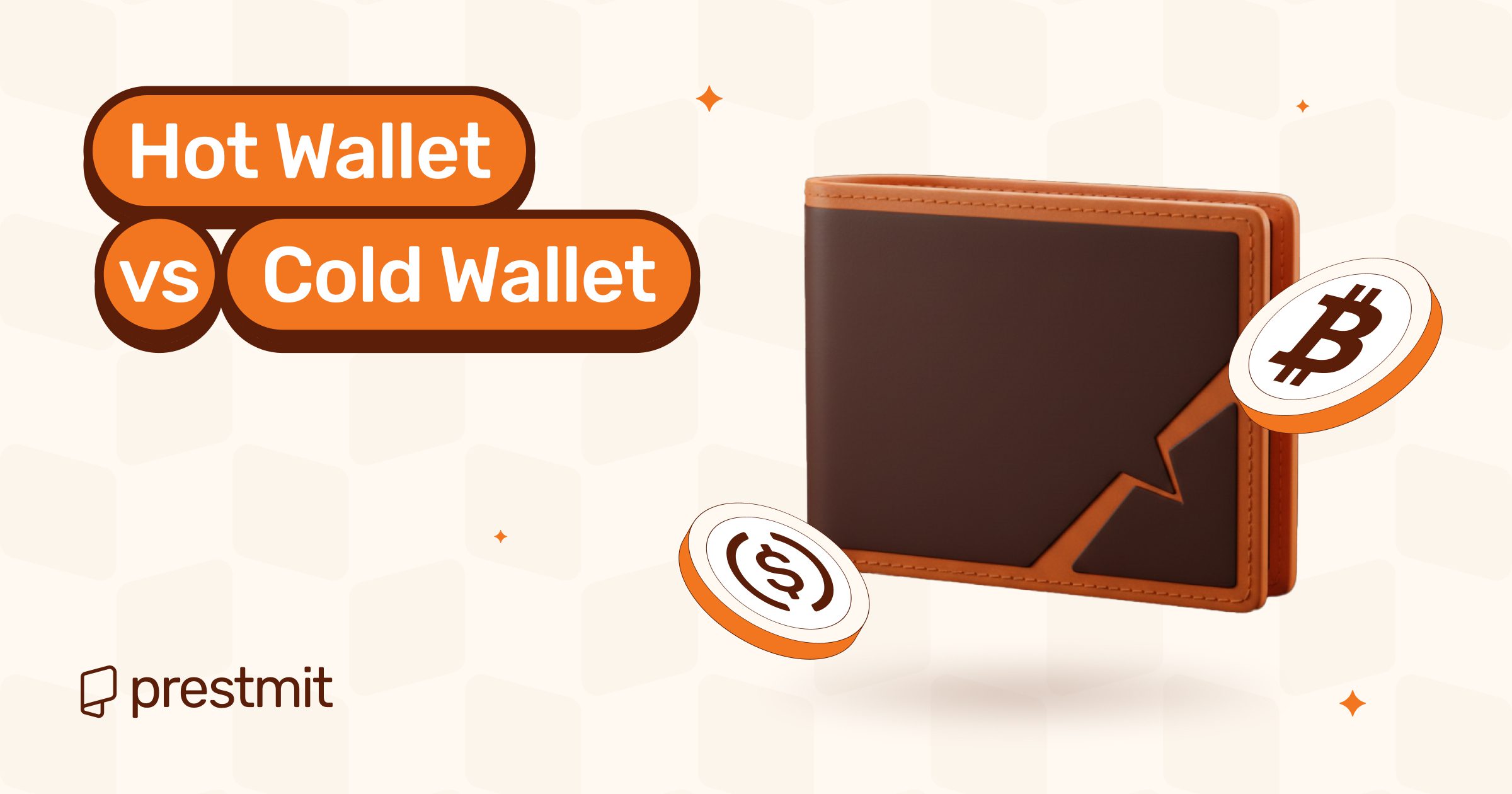Table of Contents
Imagine waking up one morning and checking your crypto balance, only to find that thousands of dollars worth of your hard-earned Bitcoin vanished overnight. This is every crypto investor’s biggest nightmare, especially because it actually happens. How and where you store your crypto can be the difference between a smart investment and hot tears.
In 2022 alone, hackers stole over $3.8 billion from crypto platforms, with a significant portion coming from compromised digital wallets.
As a crypto investor, understanding the two main types of wallets: hot and cold, their differences, and what they offer is very important. This knowledge will help you prioritize, protect your funds, and safeguard your peace of mind.
In this article, I’ll break down these wallet types, their differences, and guide you toward the safest setup for your crypto lifestyle.
What is a Hot Wallet?
A hot wallet is a cryptocurrency wallet that stays connected to the internet, allowing you to access, send, and receive your crypto anytime. It is designed for convenience and allows you to quickly make transactions or trade without delays.
A hot wallet uses public and private keys; your digital ID and secret code, to securely access funds and authorize transactions. Because it’s online, a hot wallet is convenient for daily use and trading, but it’s also more exposed to hacking, phishing, and other security risks than offline storage options.
Hot wallets come in several forms: web wallets hosted on exchanges, mobile wallets you can use on your smartphone, and desktop wallets installed on your computer. Each type balances ease of access with varying levels of security, making them ideal for everyday transactions or managing smaller amounts of cryptocurrency.
Some hot wallets only support specific cryptocurrencies, while others work across several networks. Popular examples include Coinbase Wallet, ideal for quick exchanges; MetaMask, built for Ethereum; and Edge Wallet, which works across different networks.
What is a Cold Wallet?

A cold wallet is a cryptocurrency wallet that stays offline, meaning it is not connected to the internet. Its main purpose is to store crypto securely for the long term, keeping it out of reach of hackers, phishing attacks, and malware.
Cold wallets still rely on public and private keys; the public key acts like a username for receiving funds, while the private key is your secret code for authorizing transactions. But by staying offline, cold wallets keep private keys out of the reach of online threats.
Cold wallets can take several forms. Hardware wallets, like Ledger Nano X, Trezor Model T, or KeepKey, store your crypto on a physical device. You can also use offline computers, USB drives, or even paper wallets to hold keys safely. They’re ideal for long-term storage or holding larger amounts of cryptocurrency that don’t need to be accessed frequently.
Hot Wallet vs Cold Wallet: Key Differences
1. Connection to the Internet
The most obvious difference is connectivity. Hot wallets are always connected to the internet, giving you instant access to your crypto. You can send, receive, or trade assets quickly from a smartphone, computer, or web browser, which makes them perfect for daily transactions.
Cold wallets, on the other hand, remain offline. Using them usually involves extra steps to move funds, so they’re best suited for storing assets that you don’t need to access frequently.
2. Purpose and Use
Hot wallets are designed for everyday activity and are perfect for managing small amounts of crypto or making regular transactions. If you trade regularly, spend crypto, or need quick access to small amounts, hot wallets are ideal.
Cold wallets focus on long-term storage. They’re ideal for holding larger sums of cryptocurrency that you don’t plan to move often. They’re perfect for investors who plan to hold significant amounts of crypto for months or years without touching it.
3. Security
The security difference is significant. Because hot wallets are online, they are more exposed to cyberattacks, making it important to use strong passwords, two-factor authentication (2FA), and reliable platforms to keep your funds safe.
Cold wallets store private keys offline on devices or paper, making them much harder to hack. So, even if your computer or network is compromised, your funds will remain safe.
4. Access and Convenience
Hot wallets win when it comes to convenience because they offer instant access to your crypto. You can make transactions or check your balance in seconds, and manage multiple transactions daily without extra steps.
Cold wallets are less convenient because to make a transaction, you usually need to connect the device to a computer or phone or input your keys to authorize transactions. While slower, this process emphasizes safety and ensures that funds aren’t easily moved without intention.
5. Private and Public Key Management
Both wallet types use public and private keys. Public keys work like account numbers or usernames; anyone can see them and use them to send crypto to your wallet. Private keys, however, are your secret codes to access and authorize transactions.
In hot wallets, these keys are stored online, so users rely heavily on platform security measures. Cold wallets keep private keys offline, which allows users to sign transactions securely without exposing them to the internet.
6. Recovery and Backup Options
Recovery is another key difference. Hot wallets usually offer online recovery through email verification, password resets, or two-factor authentication. This makes it easier to regain access if you forget your credentials.
Cold wallets rely on seed phrases, typically a 12–24 word backup, which must be stored offline. If the seed phrase is lost or compromised, you are at risk of losing access permanently, so proper backup and storage are essential.
7. Cost
Hot wallets are usually free to set up. Whether you download a mobile app, install a desktop wallet, or use a web wallet on an exchange, you can start using it without paying a penny.
Cold wallets, on the other hand, cost money because you’re buying a physical device. Prices vary depending on brand and features, but they typically range from budget-friendly options to premium, advanced models. This makes cold wallets more of an investment, but many users see the added security as worth the price.
Frequently Asked Questions (FAQs) About Hot vs Cold Wallet
1. Can I use both hot and cold wallets?
Yes, you can use both. Many users keep small amounts in hot wallets for daily transactions and move the bulk of their assets into cold wallets for long-term security.
2. Are cold wallets completely hack-proof?
They’re extremely secure because the private keys stay offline, but they’re not 100% hack-proof. Poor storage habits (like writing the recovery phrase in your phone’s Notes app or losing the device) can still put your funds at risk. The biggest threat to cold wallets is human error, not online attacks.
3. What happens if I lose my cold wallet device?
If you lose your cold wallet device, as long as you still have your recovery phrase, you won’t lose your crypto. Your funds live on the blockchain, not on the device. You can simply restore the wallet on a new device.
4. Are exchange wallets the same as hot wallets?
Yes, exchange wallets are hot wallets. You’re giving the exchange control of your private keys. If the exchange gets hacked or freezes withdrawals, your funds could be at risk.
5. Are mobile hot wallets safe to use on my phone?
Yes, they’re safe enough for everyday use if your phone is secure. Using strong passwords, biometric locks, 2FA, and avoiding sketchy apps goes a long way. But keep in mind that malware on a compromised phone can still target hot wallets.
6. Can I switch from a hot wallet to a cold wallet later?
Yes, you can. You can transfer your assets anytime. Many beginners start with a hot wallet for ease, then upgrade to cold storage once their portfolio grows.
Conclusion
Choosing between a hot wallet and a cold wallet comes down to one thing: how you plan to use your crypto. Most investors eventually use a mix of both, one for quick moves, the other for keeping their savings untouchable.
At the end of the day, your crypto is only as safe as the wallet that holds it. Understanding how these wallets work, their strengths, and the trade-offs they come with puts you in control of your security and makes your crypto journey so much easier.
Last updated on December 12, 2025

